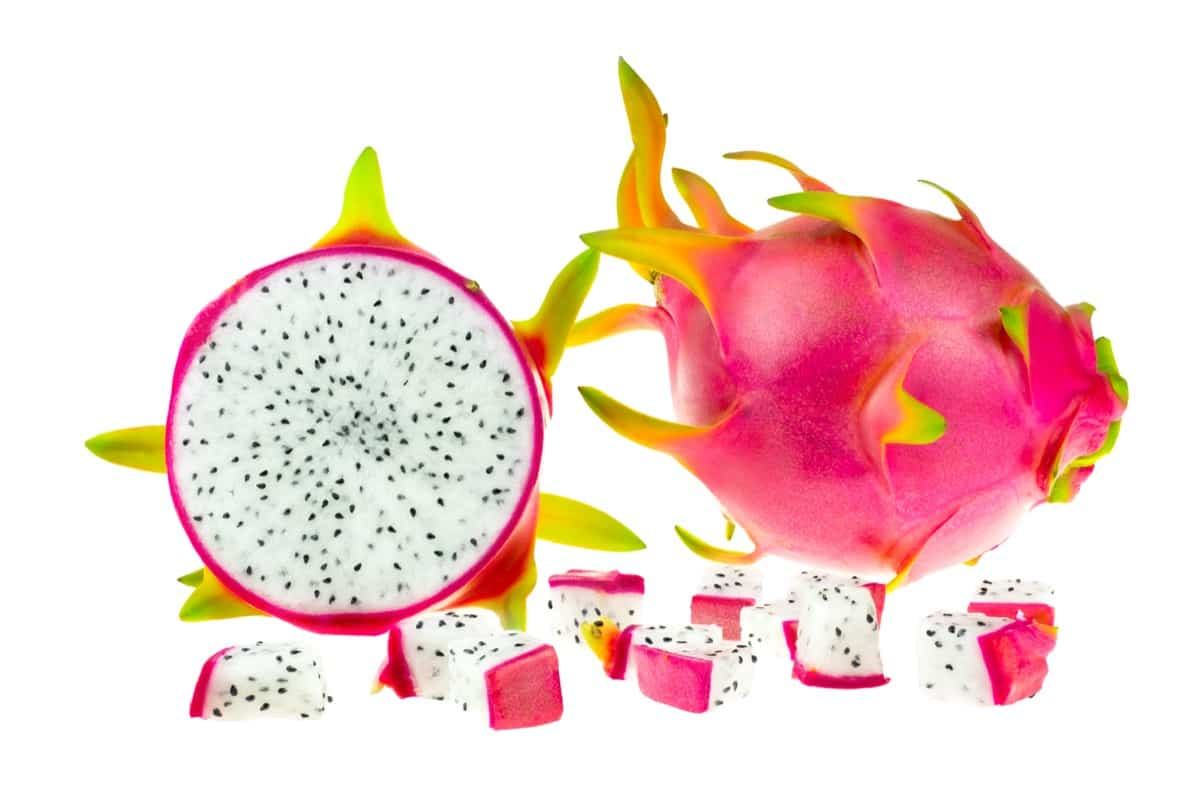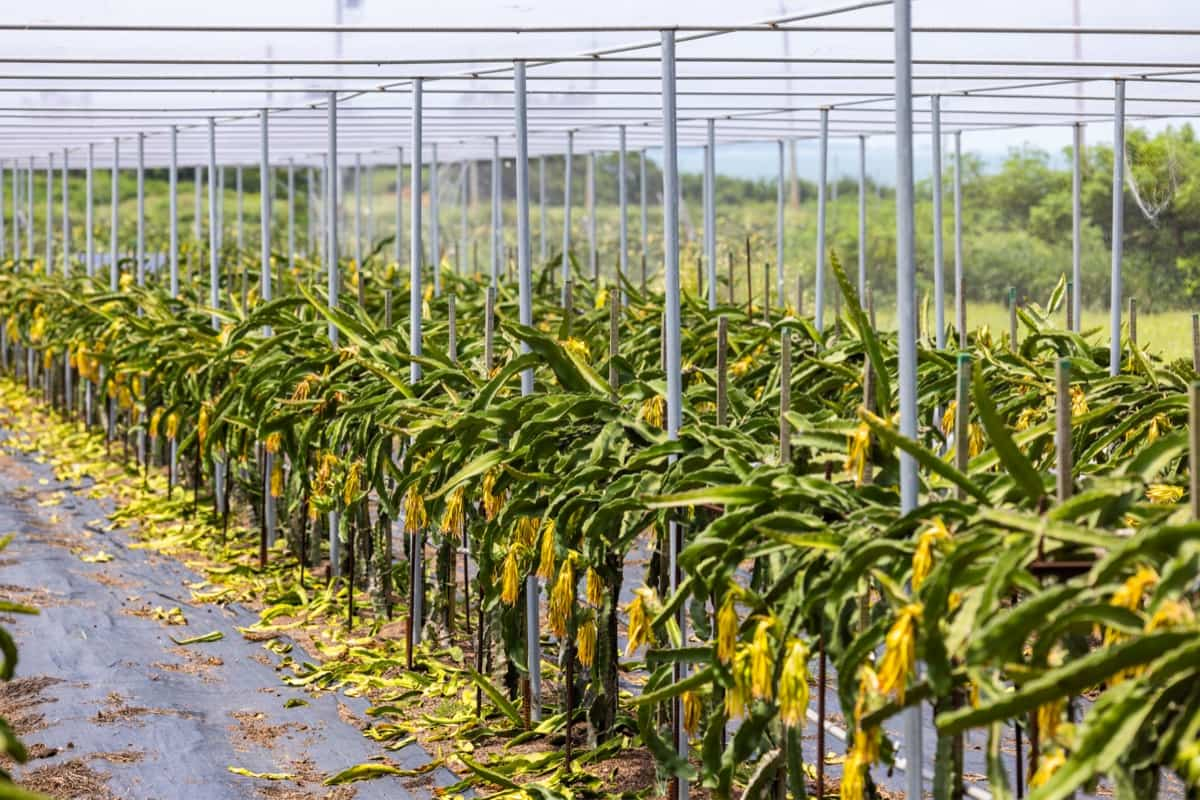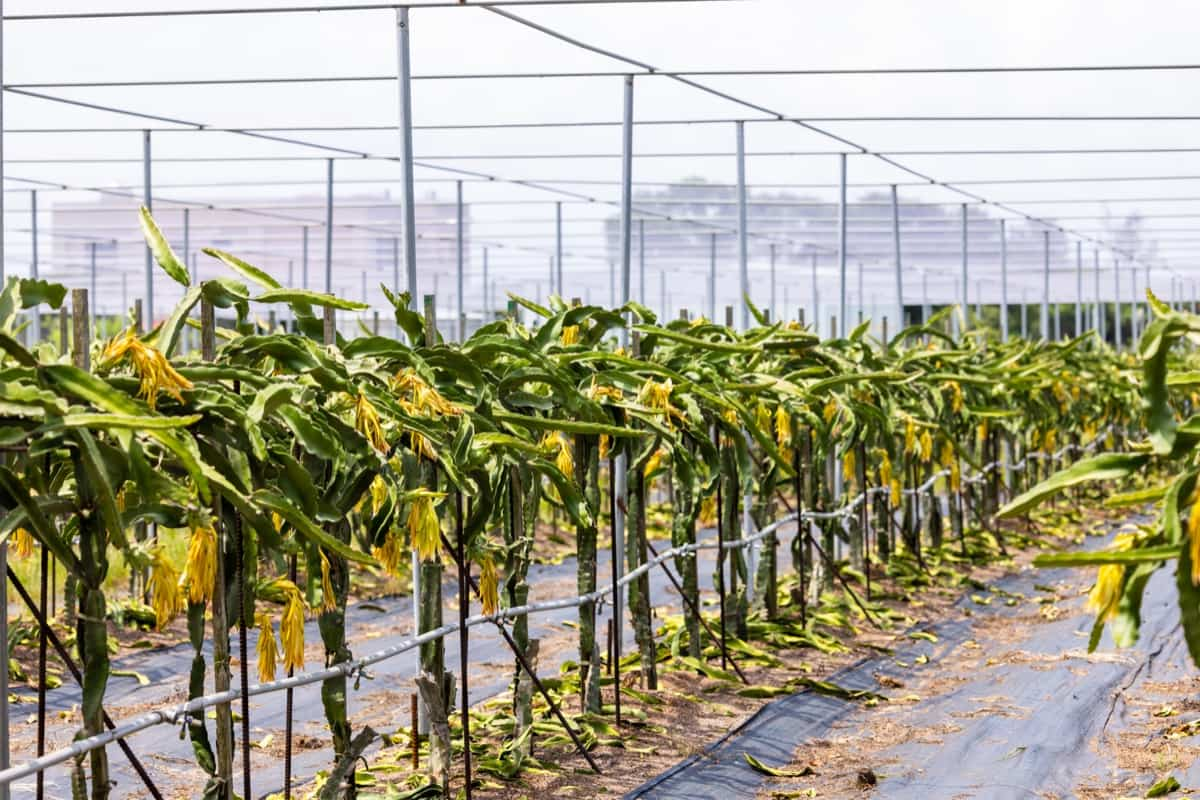Dragon fruit, also known as pitaya, is a tropical fruit celebrated for its vibrant, scaly skin and sweet, mildly tangy flesh. It comes in several varieties, with white-fleshed and red-fleshed being the most common. Dragon fruit is typically grown on cactus-like succulent plants that produce large, fragrant flowers and thrive in warm climates. In recent years, its cultivation has expanded to various parts of the world due to its high demand. There are two primary methods for growing dragon fruit: traditional soil-based cultivation and hydroponic systems.

Growing Systems for Dragon Fruits
Traditional Soil-Based Cultivation vs. Hydroponic Systems for Dragon Fruits
Traditional soil-based cultivation for dragon fruits involves planting in well-drained, nutrient-rich soil, typically in raised beds. This method relies on natural soil conditions and organic fertilizers, with watering and occasional pruning. In contrast, hydroponic systems offer a soilless approach, using nutrient-rich water solutions to grow dragon fruits in controlled environments.
Hydroponics can lead to faster growth, reduced disease risk, and efficient nutrient utilization, but it requires careful monitoring of pH, nutrient levels, and environmental factors. Traditional soil-based cultivation is more accessible but may have a longer growth cycle. The choice between the two methods depends on resource availability, climate, and grower preferences.
Comparative Analysis of Soil Quality in Different Growing Systems for Dragon Fruits
Soil quality in different growing systems for dragon fruits varies significantly. Traditional soil-based cultivation benefits from naturally occurring nutrients and microbial activity, enhancing overall soil health. However, it may require more maintenance and be prone to soilborne diseases. In contrast, hydroponic systems offer precise control over nutrient delivery, reducing the risk of diseases.
Still, these systems don’t contribute to soil enrichment and may be resource-intensive. The choice depends on local conditions and goals; traditional soil-based methods are sustainable but require more effort, while hydroponics offer control and faster growth but require external nutrient inputs and ongoing monitoring.
Evaluating Water Management Techniques in Various Dragon Fruit Growing Systems
Water management in dragon fruit growing systems is critical for optimal growth. Traditional soil-based cultivation relies on natural rain and irrigation, necessitating efficient drainage to prevent waterlogging. In contrast, hydroponic systems carefully control water supply through automated irrigation, conserving resources but demanding precise monitoring.
In case you missed it: Companion Planting with Dragon Fruits: Beneficial Plant Species

Drip irrigation and misting systems are common in hydroponics. Aeroponics, which employs a nutrient mist, is another option. Water-efficient methods like rainwater harvesting and water recycling can be integrated in arid regions. The choice depends on local climate, water availability, and sustainability goals, with hydroponic systems offering more precise water control and conservation.
Nutrient Availability and Uptake Efficiency in Soil-Based and Hydroponic Dragon Fruit Cultivation
In soil-based dragon fruit cultivation, nutrient availability relies on the soil’s natural composition and may vary based on factors like pH and organic matter content. While organic amendments can enhance fertility, nutrient uptake efficiency can be lower due to potential nutrient leaching.
In hydroponic systems, precise nutrient solutions are directly supplied to the plants, ensuring optimal availability. This leads to higher uptake efficiency as the plants have immediate access to essential elements. However, constant monitoring is crucial to maintain the correct nutrient balance. Overall, hydroponic cultivation offers superior control over nutrient availability and uptake efficiency compared to soil-based methods.
Assessing Growth and Yield Performance in Different Growing Systems for Dragon Fruits
In soil-based systems, growth may be slower initially as plants establish roots. Still, they can develop deep and robust root systems over time, potentially leading to substantial yields in well-fertilized soil. However, these systems are susceptible to soilborne diseases and can be resource-intensive.
In contrast, due to precise nutrient control, hydroponic systems often result in faster initial growth. Still, the yield might not match soil-based methods over the long term unless rigorous maintenance is upheld. Hydroponics offer efficient space utilization, making them ideal for vertical farming.
Comparing Pest and Disease Management Strategies in Soil-Based and Hydroponic Dragon Fruit Cultivation
In soil-based cultivation, traditional practices often involve natural predators, organic pesticides, and crop rotation to control pests and diseases. While these methods are sustainable, they may not provide complete protection, potentially leading to crop damage. In hydroponic systems, the soil-less environment and controlled conditions reduce the risk of soilborne diseases, and integrated pest management (IPM) techniques, such as introducing beneficial insects, are easier to implement.
However, hydroponics may require stricter sanitation to prevent pathogen introduction, and consistent monitoring is essential due to the proximity of plants. Ultimately, the choice depends on environmental factors, resources, and sustainability goals.
Environmental Impact Assessment of Different Growing Systems for Dragon Fruits
Soil-based cultivation often relies on conventional farming practices, utilizing land and impacting local ecosystems. Pesticide and fertilizer use may lead to soil and water contamination. In contrast, hydroponic systems can reduce land use and water consumption but may have a higher carbon footprint due to energy-intensive infrastructure.
In case you missed it: Managing Weeds in Dragon Fruit Farms: Strategies and Techniques

Moreover, they generate plastic waste from nutrient delivery systems. The choice between these systems should consider the trade-offs between land use, resource consumption, pollution, and energy usage, and efforts to minimize environmental impact are crucial in both methods through sustainable practices.
Economic Analysis of Soil-Based and Hydroponic Dragon Fruit Production Methods
Soil-based cultivation often requires less initial investment, relying on traditional farming practices and existing land. However, long-term costs may increase due to ongoing soil management, disease control, and resource utilization. Hydroponic systems involve higher upfront capital for infrastructure, automation, and nutrient solutions but can yield quicker and more consistent harvests with lower labor costs.
Additionally, they offer efficient space utilization, potentially increasing overall productivity and profitability. The choice depends on available resources, market demand, and the willingness to make an initial investment for long-term gains.
Consumer Preference and Market Demand for Dragon Fruits Grown in Different Systems
Consumer preference and market demand for dragon fruits vary based on their growing systems. Soil-based cultivation is often associated with organic and traditional farming, appealing to consumers seeking natural, locally sourced produce. It can also be favored by those valuing sustainability.
Hydroponic dragon fruits’ uniform appearance and reliable availability may attract consumers who prioritize consistency and convenience. Market demand depends on the target audience and their priorities. A diversified approach, incorporating both growing methods, can cater to a broader spectrum of consumer preferences and ensure a stable supply throughout the year, meeting market demands more effectively.
In case you missed it: How to Prepare the Soil for Dragon Fruit Cultivation

Conclusion
In conclusion, choosing between soil-based and hydroponic systems for dragon fruit cultivation involves a complex interplay of factors. The decision should be based on local conditions, resource availability, sustainability goals, and market demand, with potential benefits in combining both methods for a balanced and resilient approach to dragon fruit production.
- Feed Your Flock for Less: Top 10 Tips to Save on Chicken Feed
- Ultimate Guide to Ossabaw Island Hog: Breeding, Raising, Diet, and Care
- Hatching Answers: The Top 10 Reasons Your Chickens Aren’t Laying Eggs
- Eggs and Economics: Breaking Down the Cost of Raising Backyard Chickens
- Defend Your Greens: Proven Methods to Keep Iguanas Out of Your Garden
- Ultimate Guide to Cinnamon Queen Chicken: A Comprehensive Guide for Beginners
- Ultimate Guide to California Tan Chicken: Breeding, Raising, Diet, Egg-Production and Care
- Ultimate Guide to Marsh Daisy Chicken: Breeding, Raising, Diet, and Care
- 10 Types of Chicken Farming Businesses You Can Start for Profits